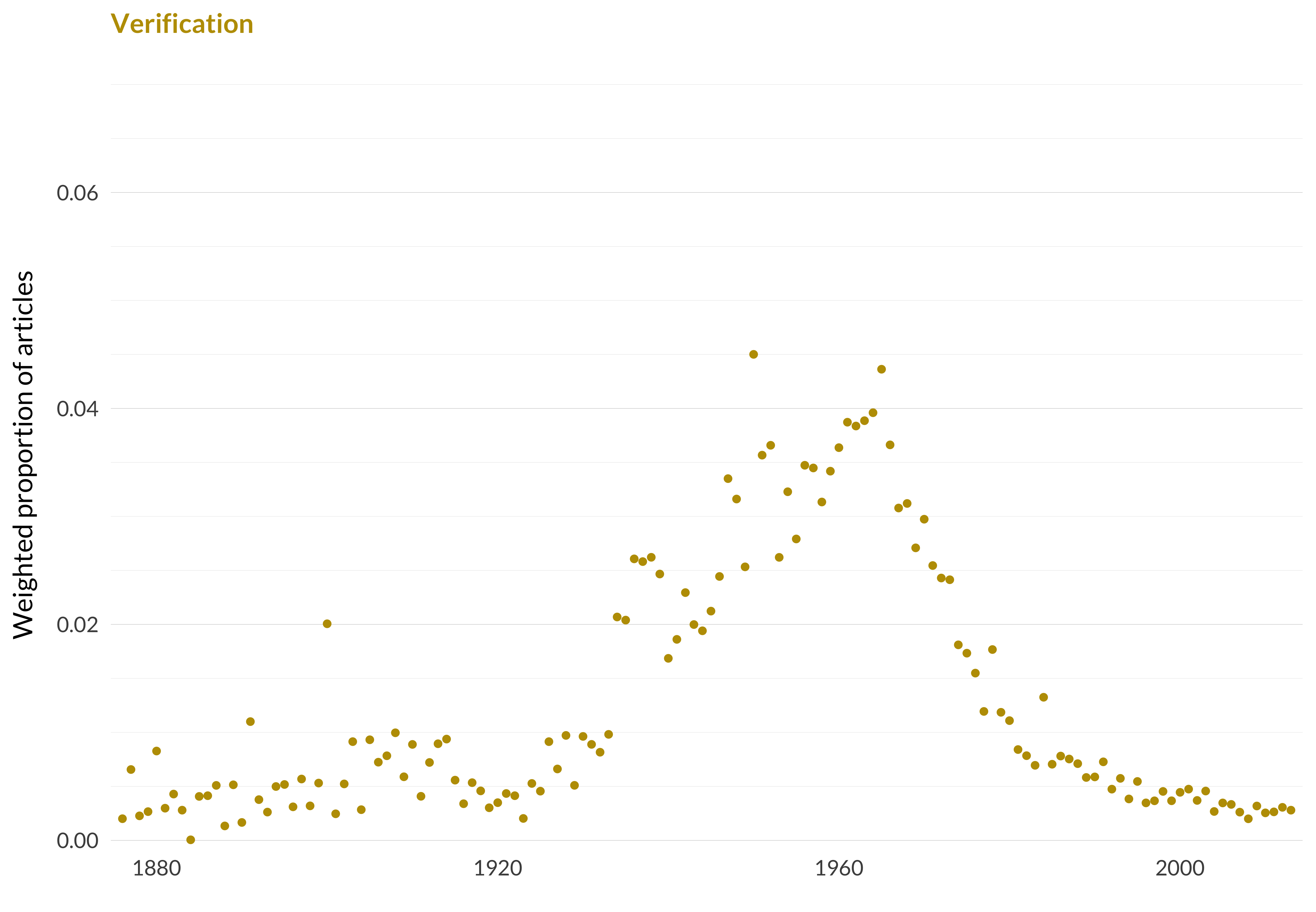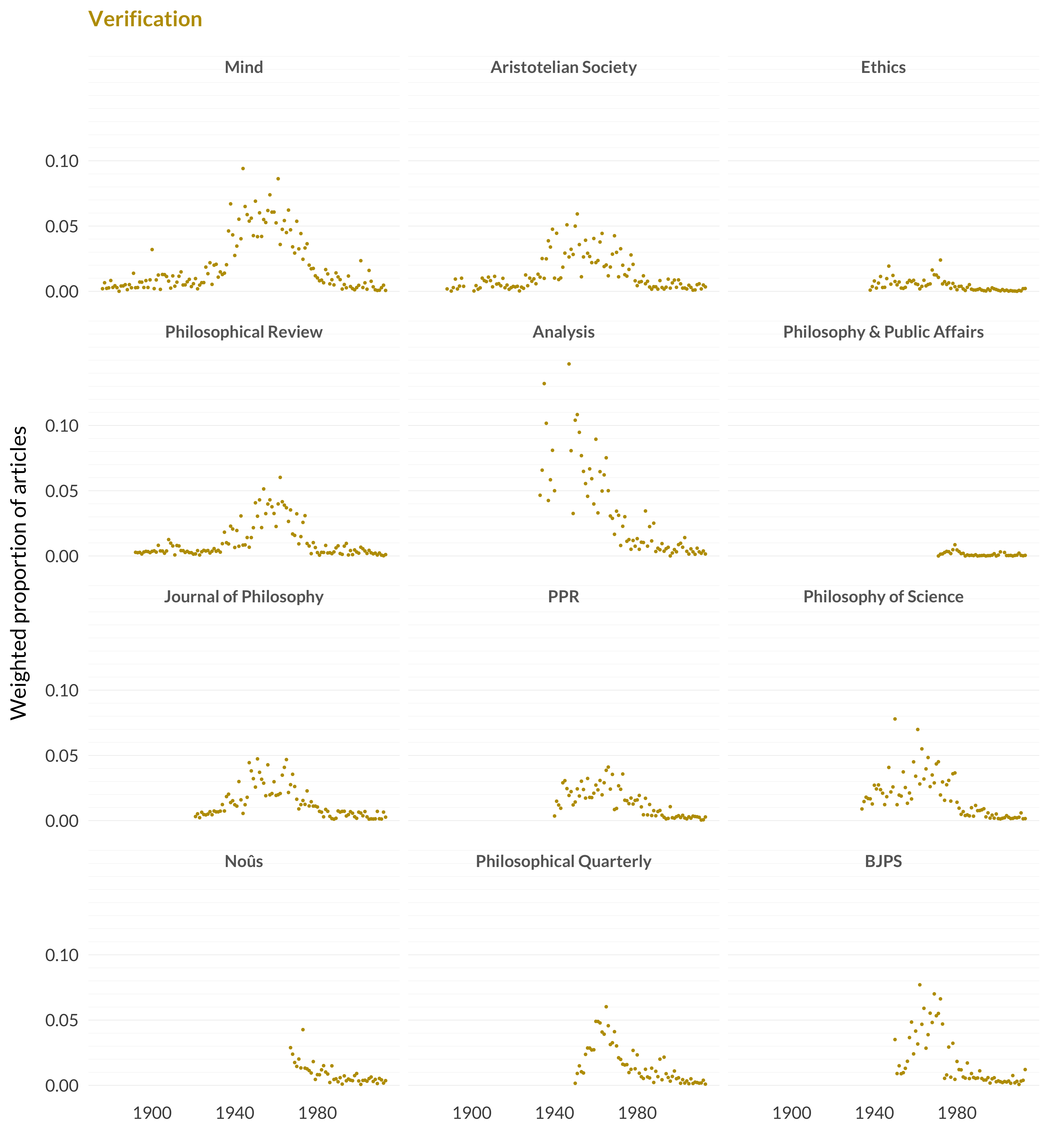2.15 Verification
Category: Logic and Mathematics
Keywords: statements, statement, verification, ayer, factual, criterion, criteria, logically, stated, meaningless, ments, hypothetical, prediction, certainty, formulated
Number of Articles: 403
Percentage of Total: 1.3%
Rank: 29th
Weighted Number of Articles: 506
Percentage of Total: 1.6%
Rank: 12th
Mean Publication Year: 1959.6
Weighted Mean Publication Year: 1961.9
Median Publication Year: 1960
Modal Publication Year: 1950
Topic with Most Overlap: Ordinary Language (0.0421)
Topic this Overlaps Most With: Analytic/Synthetic (0.0394)
Topic with Least Overlap: Evolutionary Biology (0.00067)
Topic this Overlaps Least With: Game Theory (0.00119)

Figure 2.41: Verification.

Figure 2.42: Verification articles in each journal.
Comments
This is one of the main places in the model where logical positivism is seen: a sustained discussion from about 1936 (the publication of Language, Truth and Logic) to 1980 of the verification principle. It feels to me like this model really gets going when the problems for the verification principle are most pressing—many of these articles are about problems for, and the rapidly diminishing probability of salvaging, the verification principle. For instance, the second highest probability the model gives to an article being in this topic is Robert Brown and John Watling’s “Amending the Verification Principle” (Brown and Watling 1951), which as early as 1951 is already deep into the “one patch per puncture” approach to saving the principle.
The model didn’t quite know what to do with papers about conditionals in general. I’ll talk about them more in what follows, because they are a tricky problem. But it turns out a bunch of pre-Lewisian papers on subjunctive conditionals ended up here as well. That’s not surprising; they are a particularly tricky problem for verificationists to handle.